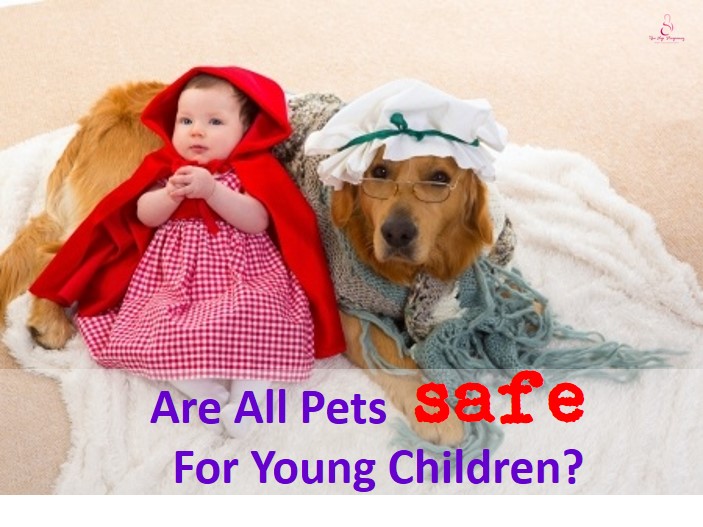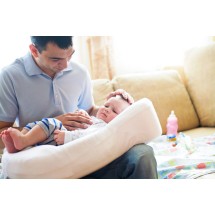 Babies and pets? There are surely many cute pictures of young children with kittens and dogs, and children may find furry animals very cute to have. However, are all pets safe for young children? Definitely not! As the wrong pet can increase risk of infection and injury to children. Having a pet does have benefits of teaching the child responsibility, about nature, care, affection and bringing joy to the family.
Babies and pets? There are surely many cute pictures of young children with kittens and dogs, and children may find furry animals very cute to have. However, are all pets safe for young children? Definitely not! As the wrong pet can increase risk of infection and injury to children. Having a pet does have benefits of teaching the child responsibility, about nature, care, affection and bringing joy to the family.
Let’s explore which pet is more suitable and which is not for babies and young children!
Before Getting the Pet
It has to be a decision made after deliberate considerations on cost, expectations on who to care and what role each family member play, space and history of allergy in the family. Discuss with your family doctor and pediatrician first and also certain animals like cats may pose risk of toxoplasmosis (parasite infection) for pregnant women.
Pets that are Not Suitable for Babies/Young Children
For a start, babies generally do not benefit as much from having a pet since their best companion is the parent! The benefits of responsibility and caring for a pet do not apply for a baby since he cannot even take care of himself. For young children who like to have a pet, beware that not any pet from a pet store or one that looks cuddly is suitable to be a pet. Here are some pets that are not recommended:
1. Turtles (or more generally, reptiles)
Turtles may be recommended by some as being appropriate as they are hardy enough to be handled by a child and not very high maintenance. However, young children who often touch everywhere and put their fingers in the mouth are at high risk of contracting salmonella (bacteria) infection from reptilian pets. Salmonella is present in the feces of the reptiles and can cause gastrointestinal illness that include diarrhea, vomiting, headaches, fever and dehydration.
2. Hamsters, Guinea Pigs, Chinchillas (or rodents)
These pets are sometimes recommended because the financial cost of buying and maintaining them are not high. However, like reptiles, they are a risk for spreading salmonella. Pets like chinchillas are nocturnal and do not interact well or like to be cuddled. Feces of hamsters and mice carry a virus lymphocytic choriomeningitis which can harm membranes of brain and spinal cord.
3. Rabbits
Another common pet in a pet store, rabbits are not suitable as they can get temperamental and bite. Though they look cuddly, rabbits do not enjoy cuddling and have to be picked in a certain way to be safe for handling.
4. Aggressive Animals
No matter how cute an animal is, it should not be near a young child if aggressive. For this reason, animals that need to be leader of the home like monkeys should not be kept as pet. Monkeys frequently attack weaker members of the family to become the leader.
5. Stray Animals
Stray animals, though not living in the wild, are also not tamed. Many still retain their innate aggressive, predatory behavior. Likewise, exotic animals that are not domesticated should not be pets for young children.
Pets that are Suitable for Babies/Young Children
After considering the usual money and attention needed to have a pet, the risk of infection and injury, many parents may not want to have a pet at all at home. After all, taking care of a baby and young child is enough work! For families that would still like to have a pet, the following pets can be considered.
1. Fish
Cost and maintenance are relatively low for keeping fish. While goldfish have longer life span, certain fish breed require less care in terms of changing water, heater and nutrition. A fish, while cannot be cuddled, can still bring enjoyment through feeding and observing the fish. Be careful about safe fish tanks – stable, no chip or sharp edges.
2. Brine shrimp
Better known as sea-monkeys, these are low maintenance, affordable and can be fun for a young child to observe.
3. Puppies
Dogs remain a favorite pet for companionship for children. However, like cats, allergy, infection risk have to be considered. Also, choosing the right dog breed is very important – avoid larger breed or those breeds that are more aggressive and low on patience! Dogs are expensive to maintain and takes a lot of effort to care for, though can provide many years of companionship.
4. Kittens
Like dogs, cats remain a favorite pet especially for those with limited space. Allergy to cat dander is one of the more common allergies, thus if your baby show skin rash or wheezing, an allergy test should be taken. Cats also can spread infection, such as carrying ticks that carry lyme disease. For both cats and dogs, parents have to exercise care and supervise contact between the pet and the child.
It is not easy to have pets and babies – it will be good to start with the lower maintenance and safe pets (and the choice is pretty limited!). For families that already have a pet, consult the right specialist on getting your pet ready for your baby. Understand more on the risk of infection and/or vaccinations required.
By Mei






